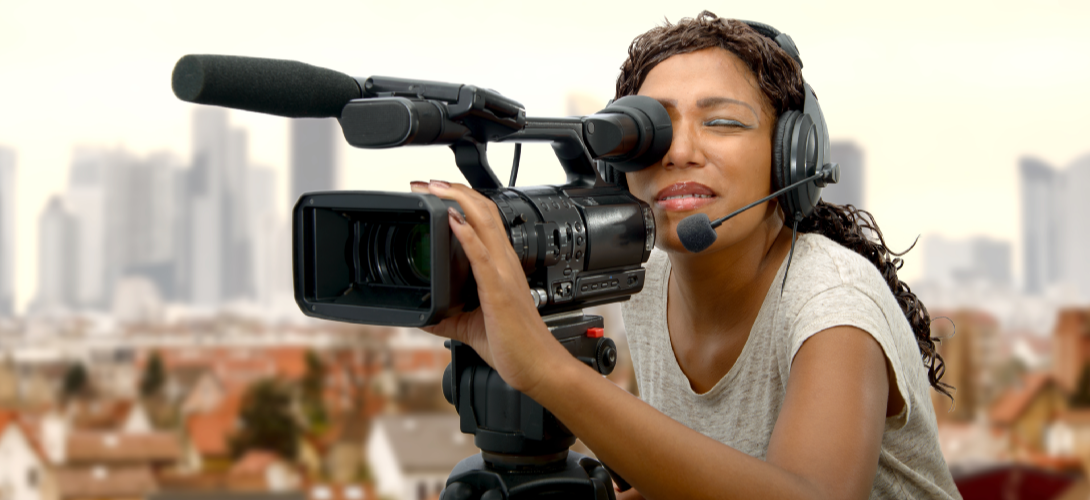It’s the first Black History Month of the decade—the perfect time to reflect on diversity, inclusion, and representation in television. While it’s no question that there is much work to be done when it comes to representation and inclusion for people of color in America, recent leaps forward make the case that there’s much to celebrate as well.
Let’s take a look at the numbers.
Black Representation in Entertainment, by the Numbers

Behind the Cameras
During the 2018-2019 television season, half of all TV episodes were helmed by women or directors of color. This 50% mark—broken down in the most recent Episodic Television Director Inclusion Report from the Directors Guild of America—is an important first. It’s also a significant jump from the previous year’s 42.5%, and a mammoth leap from 21%, just five years ago. While the representation of directors of color has not been a straight ascent, dropping to 15.1% in 2019 from a record high of 19.3% in 2018, the general trend is positive, way up from the decade’s low of 10.1% in 2015.

On the Screen
UCLA’s 2020 Hollywood Diversity Report reports some significant gains for people of color in front of the camera. Actors of color now claim the leads in 27.6% of the industry’s top films; this represents a small increase over the previous year and a huge jump from 2011’s 10.5%. An earlier report found that people of color had made notable gains in television representation and that America’s audiences preferred diverse film and television content. In fact, the 2018 Primetime Emmys broke a diversity records: for the first time ever, all four winners in both Outstanding Guest Actor categories were black. While the number of scripted leads who are people of color continues to rise, and representation is up over 21%, there are many gaps to fill. The number of people of color in lead roles would need to double to reach proportionate representation.

In the Writers’ Room
Most writers’ rooms are, unfortunately, a little farther behind the diversity curve. A report from Color of Change reported in 2017 that less than 5% of over 3,800 staffed writers in the entertainment industry are Black—and roughly 70% of all shows examined had no Black writers on staff at all.
There is, however, good work being done to fix this. In 2018, the Creative Artist Agency unveiled their Amplify Database, a free online database of 815 industry writers. It’s searchable by gender, ethnicity, genre, experience, and other factors that make it easier for studios and showrunners to find inclusive fits for their writers’ rooms and projects.
The Drivers of Change

Why is all this positive change happening? There are several factors combining to help drive increased diversity in entertainment.
Demographic Changes
America is changing and networks are paying attention. Nielsen reports, for example, that African Americans watch more TV than any other consumer group and have buying power that approaches $1.5 trillion, and networks are eager to embrace such a powerful demographic. Also, it’s predicted that the upcoming 2020 Census will reveal that more than half of the nation’s children will be part of a diverse racial or ethnic group—with the entire population following suit by 2044. Working towards inclusion and representation in this context simply makes sense: it’s who we are.
Streaming Services
Streaming services also have been a big driver of change. With lots of new channels to fill, there’s a lot of demand—and not just for content, but for new talent and fresh ideas. Providers want to differentiate themselves—so they’re taking notice of viewers’ preferences for diverse casting. The result? Many networks are making representation, both off- on-camera, a priority. HBO, for example, has had a multicultural marketing division, HBO POV (Power of Visibility), for nearly a decade. As a result, nearly 60% of their episodic programming is now directed by women and people of color—up from 35% in 2015.
Moving Forward

Of course, change occurs incrementally. The Director’s Guild of America reports that the percentages of episodes directed by white and male directors both continue to linger around 70%—in part due to the common practice of giving directing assignments to existing series insiders/employees—who tend to be less diverse than directors coming from outside existing series crews.
There is still work to be done. But with viewers pushing for more representation, and with more streaming and technology channels to fill with content, we’re sure to see more diversity in the years ahead—more Scandals and Empires, Jordan Peeles, breakout stars, and breakthrough moments. The overall trend is positive, inclusive, and worth celebrating.
From Oprah to Shonda Rimes, Black artists have been making important changes in the entertainment industry. To learn about six milestones that broke racial barriers in TV, read our related article here.
